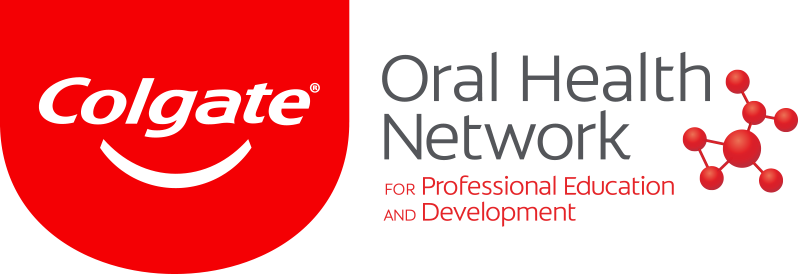CHICAGO, US: The annual inflation rate for dental services has dipped well below the rate of overall inflation in the US. This key development reverses a 25-year trend and is putting pressure on the profit margins of dental clinics, according to industry insiders and the American Dental Association’s (ADA) Health Policy Institute (HPI).
The trend was revealed in an October webinar that provided a third-quarter update on the state of the dental economy using fresh data from HPI and the Bureau of Economic Analysis (BEA).
BEA data sets concerning the dental and health sectors from 2000 to 2022 showed gradual climbs cut short by chasmic pandemic-induced falls in early 2020. In most cases, data values had not fully recovered from the falls and remained below pre-pandemic levels.
Spending on US dental services in August (adjusted for inflation and seasonally adjusted to an annualised rate) showed an annual spend of US$113.4 billion (€114.9 billion), which represented an increase of 6.4% from last year and a decrease of 9.0% compared with pre-pandemic levels. In early 2020, before the pandemic affected western dental markets, US dental spending peaked at US$124.2 billion.
Dental spending was also shown to be lagging behind other healthcare spending. In August, dental spending was equivalent to 91.4% of what it was in February 2020. Spending on physician services, however, stood at 97.8% and spending on overall healthcare services had returned to 100% of pre-pandemic levels. “Spending on dental services has been flat for the past six months,” Bradley Munson, senior research analyst at HPI, pointed out.
Of greater concern to the panel, however, were data concerning annual inflation rates. Data from the Consumer Price Index for August showed that the annual inflation rate for dental services was 4.7%. This figure is based on the price paid for dental services by patients and insurers and is well below the US inflation rate for all items, which stands at 8.2%. In effect, this means that increases in the cost of running dental clinics are not being matched by increases in income. HPI polling data confirmed that the majority of US dentists who participate in insurance networks reported that insurance reimbursement rates have stayed roughly the same for the past 12 months.
Munson explained that this represented an unusual moment in how these trends compare: “For the past year, dental services inflation has remained well below inflation overall, whereas for the past 25 years prior to 2021, dental services inflation was usually higher than overall inflation.”
“We are not seeing an increase in fees. It is a real challenge, and we are definitely having massive margin compression this year.” Stephen Thorne, CEO, Pacific Dental Services
According to Munson, increases in operating costs at dental clinics, combined with stagnating reimbursement rates from insurers, are likely to be putting pressure on dental clinics’ profits and on the net income of dentists.
On the panel was Stephen Thorne, founder and CEO of major US dental support organisation (DSO) Pacific Dental Services. Thorne said that the DSO was experiencing not only huge patient volumes but also significant margin pressures. Citing factors such as inflation, the war in Ukraine and spikes in SARS-CoV-2 infection, he commented that 2022 had so far been more challenging than 2021. “We are not seeing an increase in fees. It is a real challenge, and we are definitely having massive margin compression this year. It is very difficult,” Thorne acknowledged.
Panel member Dr Krishna Aravamudhan, vice president of the ADA Practice Institute, said that the trailing dental services inflation rate was the biggest story currently in US dental economics. Speaking about the lack of adjustments made by insurance payers, she said: “I’m sorry I am the bearer of bad news, but I think this is going to be financially challenging. I think [the insurance] industry, they are well aware of the data but we are not really seeing the market step up and say, ‘Let’s raise rates.’” Dr Aravamudhan said there had been increases of 1%–2% in insurance rates in certain parts of the US, as well as related incentives and loyalty programme initiatives from some providers.
According to Thorne, the problem may not be endemic to dental care. He explained: “It is a challenge in healthcare, in all of healthcare, because the cycle for pricing changes in healthcare isn’t weeks or months. Sometimes it is not even years, it is multiple years, because of the payer system and how it works. The payers are the employers and they have to be willing to invest some money.”
The webinar is available to view on demand on the ADA website.
Tags:
LEIPZIG, Germany: The ongoing SARS-CoV-2 pandemic and the war in Ukraine are affecting dental markets, and inflation and recession are two words that are ...
LONDON, UK: In many parts of the world, growing inflationary pressures are causing the cost of living to increase sharply. To help remedy this stress, the ...
CHICAGO, US: The American Dental Association (ADA) has urged US lawmakers to extend dental coverage to millions of low-income adults through an expansion of...
PORTLAND, Maine, US: Greater access to oral healthcare requires more qualified dentists. That is the message from the University of New England College of ...
Live webinar
Tue. 6 August 2024
6:00 PM EST (New York)
Live webinar
Tue. 6 August 2024
8:00 PM EST (New York)
Dr. Cameron Shahbazian DMD MBA
Live webinar
Tue. 13 August 2024
7:00 PM EST (New York)
Live webinar
Wed. 14 August 2024
12:30 PM EST (New York)
Live webinar
Wed. 21 August 2024
9:00 AM EST (New York)
Dr. Jim Lai DMD, MSc(Perio), EdD, FRCD(C)
Live webinar
Thu. 22 August 2024
4:00 PM EST (New York)
Live webinar
Wed. 28 August 2024
8:00 PM EST (New York)



 Austria / Österreich
Austria / Österreich
 Bosnia and Herzegovina / Босна и Херцеговина
Bosnia and Herzegovina / Босна и Херцеговина
 Bulgaria / България
Bulgaria / България
 Croatia / Hrvatska
Croatia / Hrvatska
 Czech Republic & Slovakia / Česká republika & Slovensko
Czech Republic & Slovakia / Česká republika & Slovensko
 France / France
France / France
 Germany / Deutschland
Germany / Deutschland
 Greece / ΕΛΛΑΔΑ
Greece / ΕΛΛΑΔΑ
 Italy / Italia
Italy / Italia
 Netherlands / Nederland
Netherlands / Nederland
 Nordic / Nordic
Nordic / Nordic
 Poland / Polska
Poland / Polska
 Portugal / Portugal
Portugal / Portugal
 Romania & Moldova / România & Moldova
Romania & Moldova / România & Moldova
 Slovenia / Slovenija
Slovenia / Slovenija
 Serbia & Montenegro / Србија и Црна Гора
Serbia & Montenegro / Србија и Црна Гора
 Spain / España
Spain / España
 Switzerland / Schweiz
Switzerland / Schweiz
 Turkey / Türkiye
Turkey / Türkiye
 UK & Ireland / UK & Ireland
UK & Ireland / UK & Ireland
 International / International
International / International
 Brazil / Brasil
Brazil / Brasil
 Canada / Canada
Canada / Canada
 Latin America / Latinoamérica
Latin America / Latinoamérica
 China / 中国
China / 中国
 India / भारत गणराज्य
India / भारत गणराज्य
 Japan / 日本
Japan / 日本
 Pakistan / Pākistān
Pakistan / Pākistān
 Vietnam / Việt Nam
Vietnam / Việt Nam
 ASEAN / ASEAN
ASEAN / ASEAN
 Israel / מְדִינַת יִשְׂרָאֵל
Israel / מְדִינַת יִשְׂרָאֵל
 Algeria, Morocco & Tunisia / الجزائر والمغرب وتونس
Algeria, Morocco & Tunisia / الجزائر والمغرب وتونس
 Middle East / Middle East
Middle East / Middle East
:sharpen(level=0):output(format=jpeg)/up/dt/2024/07/Study-evaluates-primary-personality-types-among-dental-students.jpg)
:sharpen(level=0):output(format=jpeg)/up/dt/2024/07/Shutterstock_2330040761.jpg)
:sharpen(level=0):output(format=jpeg)/up/dt/2024/07/Our-commitment-to-digital-dentistry-is-a-cornerstone-of-our-strategy.jpg)
:sharpen(level=0):output(format=jpeg)/up/dt/2024/07/University-teams-line-up-for-Dental-Olympics-2024.jpg)
:sharpen(level=0):output(format=jpeg)/up/dt/2024/07/website_Schein.jpg)








:sharpen(level=0):output(format=png)/up/dt/2022/01/Sprintray_Logo_2506x700.png)
:sharpen(level=0):output(format=png)/up/dt/2024/05/Curaden_Logo_RGB1.png)
:sharpen(level=0):output(format=png)/up/dt/2019/04/logo.png)
:sharpen(level=0):output(format=png)/up/dt/2022/01/Straumann_Logo_neu-.png)
:sharpen(level=0):output(format=png)/up/dt/2013/03/LM-Dental.png)
:sharpen(level=0):output(format=png)/up/dt/2024/06/UnionTech-Logo-Hub.png)
:sharpen(level=0):output(format=jpeg)/up/dt/e-papers/330729/1.jpg)
:sharpen(level=0):output(format=jpeg)/up/dt/e-papers/330727/1.jpg)
:sharpen(level=0):output(format=jpeg)/up/dt/e-papers/330725/1.jpg)
:sharpen(level=0):output(format=jpeg)/up/dt/e-papers/339526/1.jpg)
:sharpen(level=0):output(format=jpeg)/up/dt/e-papers/339524/1.jpg)
:sharpen(level=0):output(format=jpeg)/up/dt/e-papers/325039/1.jpg)
:sharpen(level=0):output(format=jpeg)/up/dt/2022/10/Lagging-inflation-rate-for-US-dental-services-squeezing-clinic-profits-and-dentist-incomes-.jpg)

:sharpen(level=0):output(format=jpeg)/up/dt/2024/07/Study-evaluates-primary-personality-types-among-dental-students.jpg)
:sharpen(level=0):output(format=jpeg)/up/dt/2022/03/DSCF6298DTI-300x300.jpg)
:sharpen(level=0):output(format=jpeg)/up/dt/2022/08/Economic-slowdown-and-inflation-dog-dental-sales.jpg)
:sharpen(level=0):output(format=jpeg)/up/dt/2022/07/shutterstock_346350440.jpg)
:sharpen(level=0):output(format=jpeg)/up/dt/2022/07/American-Dental-Association-backs-Medicaid-bill-that-would-extend-dental-care-to-millions.jpg)
:sharpen(level=0):output(format=jpeg)/up/dt/2022/07/Maine-dental-college-increasing-enrolment-to-meet-growing-demand-for-oral-health-care.jpg)






:sharpen(level=0):output(format=jpeg)/up/dt/2024/07/Study-evaluates-primary-personality-types-among-dental-students.jpg)
:sharpen(level=0):output(format=jpeg)/up/dt/2024/07/Shutterstock_2330040761.jpg)
:sharpen(level=0):output(format=jpeg)/up/dt/2024/07/Our-commitment-to-digital-dentistry-is-a-cornerstone-of-our-strategy.jpg)
:sharpen(level=0):output(format=jpeg)/up/dt/e-papers/330727/1.jpg)
:sharpen(level=0):output(format=jpeg)/up/dt/e-papers/330725/1.jpg)
:sharpen(level=0):output(format=jpeg)/up/dt/e-papers/339526/1.jpg)
:sharpen(level=0):output(format=jpeg)/up/dt/e-papers/339524/1.jpg)
:sharpen(level=0):output(format=jpeg)/up/dt/e-papers/325039/1.jpg)
:sharpen(level=0):output(format=jpeg)/up/dt/e-papers/330729/1.jpg)
:sharpen(level=0):output(format=jpeg)/up/dt/e-papers/330729/2.jpg)
:sharpen(level=0):output(format=jpeg)/wp-content/themes/dt/images/3dprinting-banner.jpg)
:sharpen(level=0):output(format=jpeg)/wp-content/themes/dt/images/aligners-banner.jpg)
:sharpen(level=0):output(format=jpeg)/wp-content/themes/dt/images/covid-banner.jpg)
:sharpen(level=0):output(format=jpeg)/wp-content/themes/dt/images/roots-banner-2024.jpg)
To post a reply please login or register